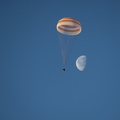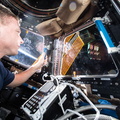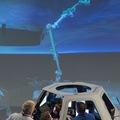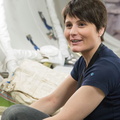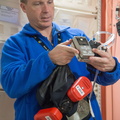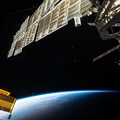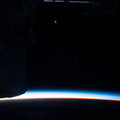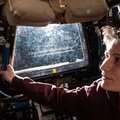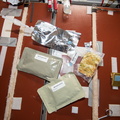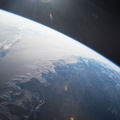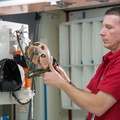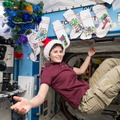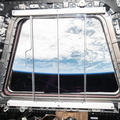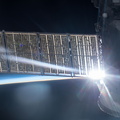
WIKIARCHIVES.SPACE
The Human Spaceflight Archive

Cancún, Mexico. A long lens was used by astronauts aboard the International Space Station to take this image, and it highlights many natural and built features. The street pattern of Mexico's tourist mecca, Cancún, contrasts with the waterways of the marinas that open into the bay and the lagoons. Brilliant blue water over coral reefs contrast with the dark waters of inland lagoons. The reefs are the second largest reef system on Earth, and draw tourists from all over the world. The wide, well developed beach on the gulf coast (image upper right) is the result of vigorous wave energy; the white sand makes the beach easily visible from space. But wave energy is reduced along Cancún's protected shoreline (image center) and the beaches are thin or non-existant. Fair-weather cumulus clouds are scattered across the image top left.
Information
- Taken in
- Space
- Autor
- NASA
- Descrição
-
Cancún, Mexico. A long lens was used by astronauts aboard the International Space Station to take this image, and it highlights many natural and built features. The street pattern of Mexico's tourist mecca, Cancún, contrasts with the waterways of the marinas that open into the bay and the lagoons. Brilliant blue water over coral reefs contrast with the dark waters of inland lagoons. The reefs are the second largest reef system on Earth, and draw tourists from all over the world. The wide, well developed beach on the gulf coast (image upper right) is the result of vigorous wave energy; the white sand makes the beach easily visible from space. But wave energy is reduced along Cancún's protected shoreline (image center) and the beaches are thin or non-existant. Fair-weather cumulus clouds are scattered across the image top left.
To shoot crisp mages with long lenses, astronaut photographers must learn to brace themselves against the ISS bulkhead to prevent any slight shaking that would blur or "smear" the picture. Counterintuitively, they then need to move the camera carefully retaining the target at the same point in the viewfinder (the landscape moves across the viewfinder quickly with long lenses). This is called tracking the target and requires good coordination by the photographer—again, to prevent blurring. Shorter lenses do not require this skill because the image appears to pass more slowly across the viewfinder.
- Aberta em
- Sábado 30 Agosto 2014
- Albuns
- ISS (WIP) / EXPEDITIONS / EXPEDITION 42
- Source link
- https://www.flickr.com/photos/nasa2explore/albums/72157632010693700
- Visitas
- 25
- Pontuação na avaliação
- Sem avaliação
- Classifique esta foto
- License
- CC BY-NC-ND
- Modified by WikiArchives
- No (original)
- Descargas
- 1
EXIF Metadata
NIKON CORPORATION NIKON D2Xs
- Make
- NIKON CORPORATION
- Model
- NIKON D2Xs
- DateTimeOriginal
- 2014:08:30 14:35:04
- ApertureFNumber
- f/5.6
Desenvolvido por Piwigo
